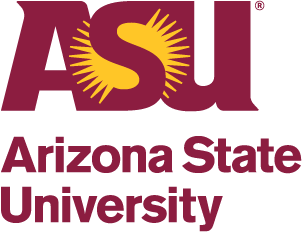Spanish for the Professions ,Certificate
Classic Languages, International, Interpreter, Spanish Studies, Translation, foreign language, spanish
Improve your bilingual skills and advance your career in any field. You'll strengthen your oral and written Spanish proficiency and stand out in today's job market.
This 15 credit hour certificate program helps students hone their Spanish communication skills and gain the cultural knowledge to help them serve the needs of the growing U.S. Latino community at home and abroad.
The program's combination of professionally focused courses and practical experience enhances students' professional preparation for employment in positions that require advanced proficiency in Spanish and an in-depth understanding of U.S. Latino culture. With the flexibility of iCourses and enriching internships, students gain practical experience while mastering intercultural communication, decision-making, and problem-solving with cultural and ethical awareness.
- College/school:
College of Integrative Sciences and Arts
- Location: Downtown Phoenix
2025-2026 Catalog Year
| Requirement | Minimum Grade | Credit Hours |
|---|
| Requirement | Minimum Grade | Credit Hours |
|---|---|---|
|
The Spanish for the professions certificate requires at total of 15 credit hours. A grade of "C" or better is required in all coures. Pass/Fail courses cannot be used.
|
||
| Required Courses | ||
|
SPA 404: Spanish in U. S. Professional Communities
3 Credit
Hours
Minimum
Grade:C
|
C | 3 |
|
SPA 405: Latino Cultural Perspectives for the Professions
(HUAD)
3 Credit
Hours
Minimum
Grade:C
|
C | 3 |
| Electives | ||
|
Students will complete nine upper-division credit hours from one of the three focus areas: Spanish for the Professions, Professional Spanish and Latinx Cultures for Social Care and Public Work, or Professional Spanish and Latinx Cultures for Heritage Speakers.
|
||
|
Required Courses:
Choose one elective course from the following:
Required courses:
Choose one elective course from the following:
Required course:
Choose two elective courses from the following:
9 Credit
Hours
Minimum
Grade:C
|
C | 9 |
|
Prerequisite courses may be needed in order to complete the requirements of this certificate.
|
||
|
Before enrolling in SPA 484 Internship, students should complete a minimum of nine credit hours in the certificate program and seek instructor's approval. If you are not in the Spanish for the Profession Certificate and want to have this experience, contact the instructor. For Fall enrollment, submit your enrollment request by May 1st. For Spring enrollment, submit your enrollment request by December 1st. Email CISAadvising@asu.edu.
|
The prerequisites for this certificate are completion of SPA 314 Spanish Conversation and Composition, or SPA 316 Advanced Spanish II for Bilinguals, or permission of instructor.
A student pursuing an undergraduate certificate must be enrolled as a degree-seeking student at ASU. Undergraduate certificates are not awarded prior to the award of an undergraduate degree. A student already holding an undergraduate degree may pursue an undergraduate certificate as a nondegree-seeking graduate student.
Students can advance their career options with an undergraduate certificate. The certificate in Spanish for the professions can complement a graduate's major program of study and make them more marketable to employers.
Graduates serve in professional settings such as health and legal services, journalism, business, social work and criminology, among others.
Students who complete this undergraduate certificate often decide topursue employment in a variety of fields, including:
- business
- community interpretation
- education
- engineering and urban planning
- government
- health care services
- legal and justice systems
- social work
- tourism
School of Applied Sciences and Arts
|
AZCNTR 380
CISA@asu.edu
480-965-4464
3 year programs
These programs allow students to fast-track their studies after admission and earn a bachelor's degree in three years or fewer while participating in the same high-quality educational experience of a 4-year option. Students should talk to their academic advisor to get started.
Accelerated master's
These programs allow students to accelerate their studies to earn a bachelor's plus a master's degree in as few as five years (for some programs).
Each program has requirements students must meet to be eligible for consideration. Acceptance to the graduate program requires a separate application. Students typically receive approval to pursue the accelerated master’s during the junior year of their bachelor's degree program. Interested students can learn about eligibility requirements and how to apply.


